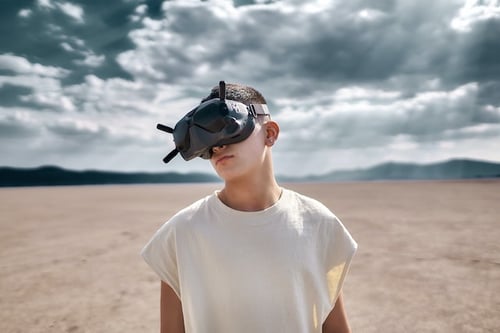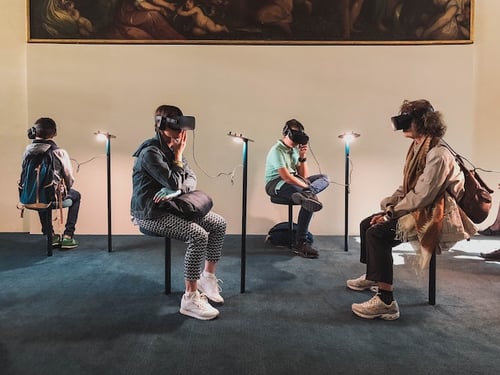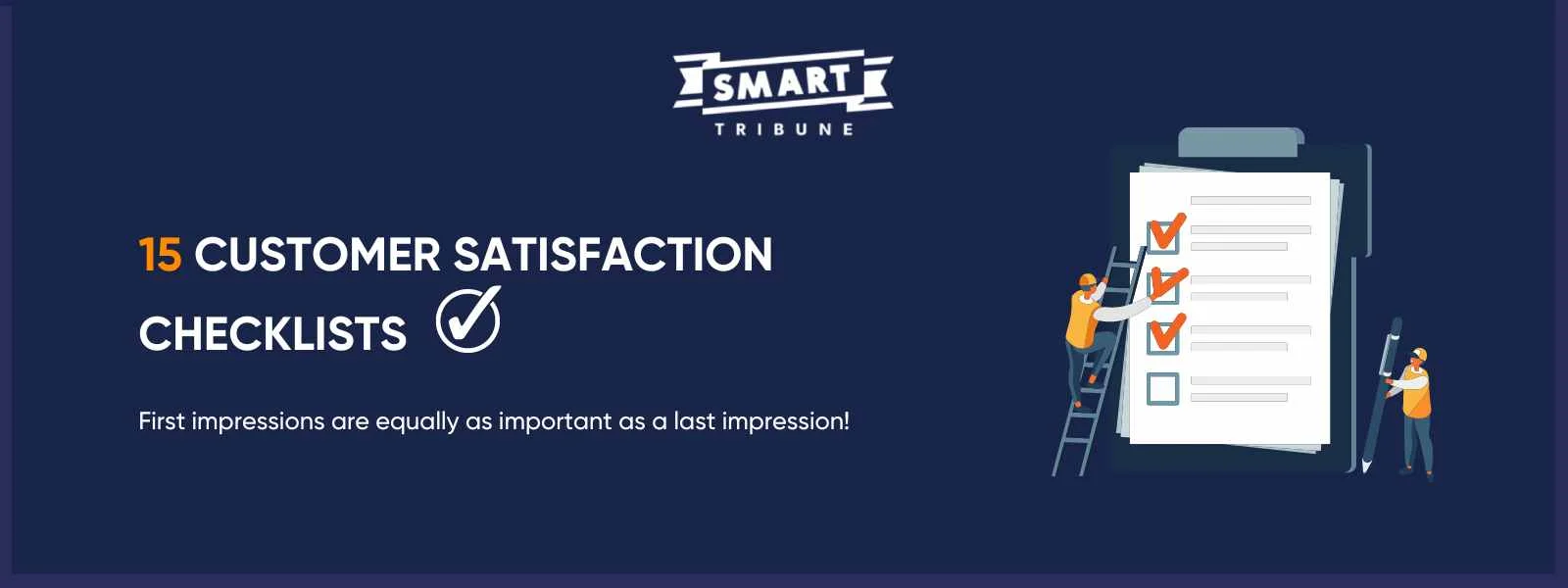
On FEBRUARY 8, 2022
Understanding the Metaverse and its Potential for Customer Experience
The metaverse: the concept that’s gotten a lot of buzz recently. Some think it’s a passing trend. Others claim it’s the future of social networks. And some experts consider the metaverse the beginning of a whole new world, more virtual than physical. This universe 2.0 isn’t just for Gen-Z video gamers. Companies, employees and customers alike can also find their place in the B2B and B2C metaverse…and even sooner than you might think.
Beyond theories, how can one define today’s metaverse? And, what challenges and opportunities does it present to brands, in particular when it comes to customer experience?
In this new article, Smart Tribune takes on “the world of tomorrow” and decodes its impact on customer experience.
Table of content:
- What is the metaverse?
- The history of the metaverse: origins of the concept
- What are the platforms of the metaverse?
- Customer experience opportunities in the metaverse
- The B2C metaverse: a market full of opportunities
- The metaverse for the company: the future of augmented employee experience?
What is the metaverse?
Today, only 38% of consumers are familiar with the concept of the metaverse (according to a Wunderman Thompson report). So, before moving on to the practical, let’s talk about theory.
The metaverse is considered the internet of the future. The term comes from the words “meta” (beyond, in ancient Greek) and “universe,” to designate a universe beyond the physical world.
More concretely, this new reality integrates shared and interconnected online spaces. Metaverse users can work, play, interact socially and even conduct transactions. In short, it’s a parallel virtual world, accessible in 3D.
And if the metaverse seems to you like a utopian project or like mission impossible, think again. It’s a reality, notably popularized by Facebook, which announced at the end of 2021 its transition into the metaverse (with a new company name, Meta).
For the company previously known as Facebook, “the metaverse is the next evolution of social interactions.” And this transformation is already in progress: Numerous platforms already propose immersive employee or customer experiences, thanks to virtual reality (VR) or augmented reality (AR).
But before taking a leap into the future and discovering the innovations of the metaverse, let’s go back to the past. This may surprise you, but the metaverse is not a new concept!
The history of the metaverse: origins of the concept
In 1992, the American sci-fi author Neal Stephenson was the first to use the term “metaverse.” In his novel Snow Crash, he describes a virtual world inhabited by avatars of real people. The year 1992 is therefore the year of the invention of the concept of the metaverse, even if terms like “virtual reality” were already in use (the first to use that term was the French author Antonin Artaud, who introduced the concept in 1983 in one of his plays).
Since, the concepts of the metaverse and of virtual reality have inspired numerous films, like The Matrix (1999), Summer Wars (2011) or Steven Spielberg’s adaptation of the novel by the same name, Ready Player One (2018)
In the 2000s, the metaverse went from fiction to reality, notably thanks to the video game Second Life. This platform seduced millions of users, who were able to evolve in their virtual universe, meet others, attend concerts by “real” artists like U2, and also to work. More than a game, Second Life was a real parallel economy, with its own currency, convertible to dollars.
That said, with the arrival of Facebook, Second Life was forgotten. But since 2007, the platforms have multiplied, making the metaverse a new reality.
What are the platforms of the metaverse?
After the success of Second Life, new video games tried to ride the wave of the metaverse concept. For example, Minecraft or Animal Crossing are very popular today. But the star video game that propelled the metaverse into millions of homes since 2017 is Fortnite.
From playgrounds to specialized media, Fortnite is a big topic of conversation. The “battle royale” game whose objective is to be the last survivor has had massive success. In 2021, Epic Games studio (developer of Fortnite) announced its last round of fundraising in the amount of a billion dollars to continue in its conquest of the metaverse.
Beyond gaming, these virtual universes are also well-explored playing fields for marketing campaigns. In 2020, the rapper Travis Scott gave a concert on Fortnite for an audience of 27 million users. The goal seems clear: Tomorrow, the video game will expand its role as a “game” to that of “second life,” with users able to attend events, meet people, and have exceptional digital experiences.

Furthermore, these new types of immersive experiences can also be created directly by the users on platforms like Roblox. This tool allows you to create your own games or virtual worlds. And brands, like Nike, have not hesitated to follow the trend. The brand reproduced its flagship in a virtual way, with access to sports arenas where users can play games. Users can also personalize their avatars’ outfits, with Nike shoes and clothing. And certain articles are available for purchase directly via the platform.
This spectacular metaverse and virtual reality boom can be explained in part by the consequences of the Covid-19 crisis and the explosion of the digital transformation. The successive confinements facilitated (and sometimes imposed) a digital adoption. Today, the future of customer experience is being drawn across the metaverse, breathing new life into brand-consumer relations.
Customer experience opportunities in the metaverse
Based on a “Retail Perceptions” report, 71% of consumers admit that they would purchase more often from brands that proposed augmented reality (AR). This statistic underscores consumer interest in innovative customer experiences.
For brands, the adoption of these new concepts like the metaverse could allow them to sustainably transform customer experiences. Here are the principle advantages of the metaverse when it comes to customer experience:
1. The metaverse personalizes the customer experience
Since its creation, the priority of the metaverse has been the personalization of experiences: the gaming experience, the user experience, etc. And of course, the customer experience. Users have the possibility to personalize their avatars and live totally unique experiences.
In the metaverse, brands can also propose custom-made ads in augmented reality. These virtual advertising campaigns can be defined based on age, gender or interests of the users on social networks. For consumers, this ultra personalization contributes to the creation of memorable experiences and strengthens customers loyalty. For brands, this is an opportunity to improve customer knowledge and a “Customer-centric” approach, thanks to data collection.

2. The metaverse gamifies the customer journey
The metaverse offers the opportunity to transform e-commerce. At a time when brick-and-mortar shops are declining, this solution accelerates “immersive shopping.” With avatars as characters, universes inspired by video games…gamification is clearly making an impact on the evolution of the customer journey. So, after e-commerce and m-commerce (mobile commerce), will the new trend be “metaverse-commerce”?
For the youngest generations, there’s no doubt; 48% of Millennials and 38% of Gen Z think that the metaverse will be part of their daily lives in the next ten years (based on a Harris survey). Furthermore, 51% of Millennials and 37% of Gen Z think that having unique assets in the metaverse is a justified expense. The expectations of these digital natives seem clear: The metaverse represents the future, as much for customer journeys as for “second life” experiences.
3. The metaverse is a tool for differentiation
Today, this innovative concept represents an opportunity for brand differentiation. Whether for B2B or B2C brands, the early actors on these platforms are considered ahead of the curve…and that’s important for their brand image.
Additionally, the brands that innovate through new omnichannel engagement strategies have a higher rate of customer loyalty, around 89%. Besides allowing them to stand out from the competition, the metaverse is a tool for customer loyalty.
4. The metaverse transforming customer service (maintaining an HtoH, or human to human approach)
Imagine: Tomorrow, your company creates a unique brand experience in the metaverse. Users can discover a new world, make purchases and also communicate with the brand and with other users. And if the customer has a question to ask customer service, it would be counterproductive to have them leave the immersive experience to pick up a phone or send an email. Tomorrow, the metaverse will also become an innovative tool for customer relations.
For example, customer service can imagine having holograms of their agents, directly in the virtual universe. Certain brands can also conceive of demonstrations in virtual or augmented reality for consumers equipped with special headsets.
These opportunities pave the way for many experiences that can help evolve customer service, all while maintaining an augmented human approach.

The B2C metaverse: a market full of opportunities
Already, brands have reason to innovate thanks to the metaverse. Brand messages could be much more impactful, thanks to the quantity of user data and information that would increase by 70% with the use of augmented reality. The impact on performance would also increase. According to Morgan Stanley, brands can generate an additional $50 million before 2030 thanks to these new virtual universes.
In the short term, certain markets like luxury have already started to invest in social games and NFTs through new immersive universes. These opportunities will help the luxury market grow more than 10% over the next 8 years and to increase the sector’s profit by about 25%.
Ralph Lauren, Gucci and even Vans have already seized this opportunity. Partnerships with the platform Roblox have allowed for the creation of new, original virtual experiences. And the good news is that this 2.0 reality is not limited to B2C, luxury customer experiences…
The metaverse for the company: the future of augmented employee experience?
With the metaverse, the whole employee experience chain can be reimagined. With the boom of remote work and digital transformation, tomorrow’s workplaces can be virtual…and employee relations can be much more immersive!
For example, the metaverse could accelerate the creation of immersive, online workspaces. The idea is also to facilitate remote team collaboration. To get there, the concept of “augmented reality” could be replaced by that of “overlap reality” with the creation of human holograms. These virtual representations of employees could be projected in the physical world, simplifying communications, product demos or trainings.
Finally, the metaverse could also facilitate recruitment, team building or virtual events. For Mark Zuckerberg, the metaverse represents “an embodied internet, where instead of watching content, you’re in it.” And from customer experience to employee experience, this new universe — where people are the players as well as the spectators — is without limits.
So, are you ready to enter reality 2.0, and bring your customers and employees into the metaverse?


.png)



